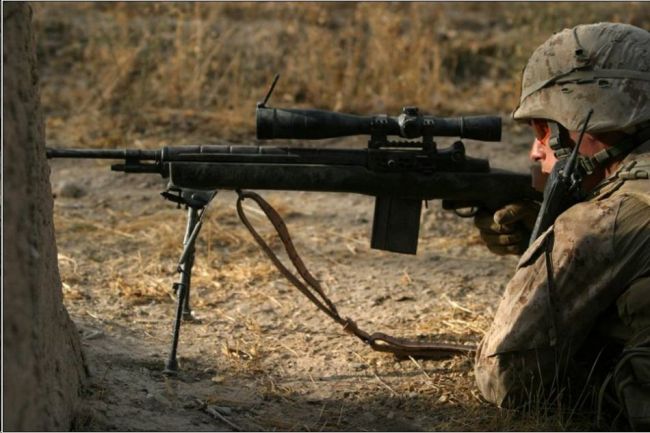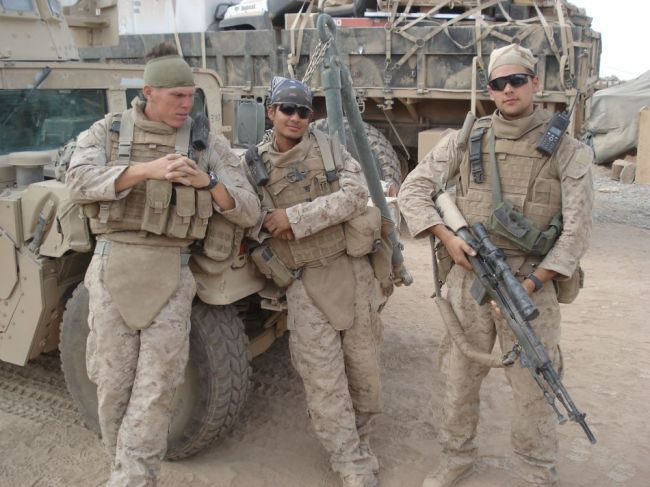HorseSoldier, please do explain to me why you believe the battle rifle concept has been obsolete since before WWI. What would you have recommended as an alternative? And why would you recommend it.
Because as soon as the other side quit wandering forward at a slow walk in open order and started trying to hide and use cover and concealment effectively on the battlefield (as folks were doing late in WW1) both attempted and effective engagement ranges for individual rifles dropped abruptly and cartridges in the 30-06/308/7.62x54/etc class were no longer optimal for real fighting and the volley sights and other innovations to allow those rifles to engage area targets at 1000 and 2000 meters became superfluous junk.
Even restricting the options to the technology of the time, a guy in the trenches circa 1917 would have been much better served by a fully militarized version of the Winchester Model 1907 or 1910, or even a carbine sized bolt gun chambered for the same ammo (or even better something technologically feasible at the time but not invented yet like 276 Pedersen or 7.92x33).
As I see it coming to a conclusion that fighting beyond 300 yards is obsolete is at very best short sighted.
No one said fighting beyond 300 meters is not possible for a military unit, with access to a range of weapon systems to make it lethal to a variety of targets at various ranges.
What has been said is that the limits of human physiology don't support effective engagements past 300 meters with individual weapons. The human eye lacks the acuity to reliably pick out people trying to not be seen and dressed the color of mud or dust at ranges past that, and definitely has serious difficulty positively ID'ing them as hostile or not on a complex battlefield. Human reaction time is not quick enough to consistently gets sights on fleeting targets past 300 meters. Human physiology under stress makes effectively making the shot under two-way range conditions unlikely, even if you manage to acquire a target and get a gun on them.
Successful engagements do occasionally occur past 300 meters, but the reality is that having a human being in the mix stacks the deck against it happening. So we have looked for alternative solutions to the problem, such as attacking from ambush where circumstances target behavior is more conducive to killing them (which is all sniping really boils down to). Or compensating for human inability by saturating targets with lots of bullets (which is basically why machine guns are so indispensable -- though T&E mechanisms also help remove the person from the equation). Or taking the human out of the equation as much as possible by saturating the best guess for the enemy's location with precision aimed weapons whose crews aren't subject to the fight/flight stress of being under fire (which is why indirect fire is so indispensable).
(Or -- at the personal weapon level -- increase the number of rounds in the gun, optimize the recoil and trajectory for 3-400 meter engagements, and do everything else we can to give the shooter the best chance to effectively get hits by compensating for human factors and limitations. This includes issuing ACOGs -- which compensate for limitations of human vision -- and AimPoints --which compensate for limitations of human reaction time.)
Right now our troops are being engaged at distances beyond our super rifles ability. These are not fanciful stories.
And yet body bags and coffins aren't stacked to the rafters on aircraft coming back to CONUS because, while the bad guys in Afghanistan are initiating at long range,
they're not doing much when they do. They engage at long range because we have had such success optimizing kit, weapons, training, and tactics for real gunfighting that when they initiate at ranges where they can do something, they usually get killed for their trouble. So they lob in some AK rounds at an area target, like an entire US patrol, and/or light it up with mortars, PKs and Dishkas since that gives them decent odds of surviving to fight another day, even if it means they have dismal odds of producing any militarily significant result.
So what you're saying is that we should de-optimize our equipment for real combat to try and better engage in tit-for-tat nuisance fire at long range. That idea is simply insane.
That being said there was several cases when I would have loved to have a rifle with a little penetration. It seems that participants in firefights tend to gravitate to cover, odd huh?
Since we don't just fight with personal weapons, I'd have to wonder why if you needed to penetrate cover you didn't look at putting alternative fire on a target. Patrols and convoys don't usually restrict themselves to just M4s or M16s.
For the life of me I cannot recall a time out on patrol or on a mission that I wouldn't rather have had one of those "obsolete" battle rifles.
I'd honestly have to question the quality if your weapons training and/or familiarity with trying to run a 7.62x51 long gun at speed, in that case. Picking a weapon that makes you a liability in 95%+ of engagements just because it might help less than 5% of the time is a pretty questionable course of action.
It just seems odd that we gave up a highly effective round to save a few pounds and then seeing individuals add 3 pounds of high speed devices to their M4.
The reality is that we did not give up a particularly effective round when 7.62x51 was dropped as the general service round for the US military. It wasn't very good at what it was being asked to do, because it simply wasn't optimized for real gunfighting.
The three pounds of stuff you mention being put on M4s are systems that help overcome human factors and make successful engagements more likely with weapons equipped with stuff like ACOGs, lights, etc. An refielding of the M14 or fielding of the Mk 17 would include all those bells and whistles because 7.62x51 doesn't fix anything on the human factors side of things (and actually generates more problems). The M14s that have been dusted off and put back into service until M110 fielding is completed are ridiculously heavy for what they do, as an example.
So the net gain would be an even heavier weapon with half the basic load of ammo, by weight, and only 2/3 as many rounds in the gun. None of which is a recipe for success.
As far as I'm concerned the M-16 would make a great replacement for the M-1 Carbine (not that one was really needed) and nothing more.
Everyone is entitled to an opinion, obviously, but the fact that the entire planet has dropped the battle rifle as a standard service rifle would suggest that pretty much everyone who has a serious interest in putting the best tool in the hands of their warfighters would argue that you're wrong.




